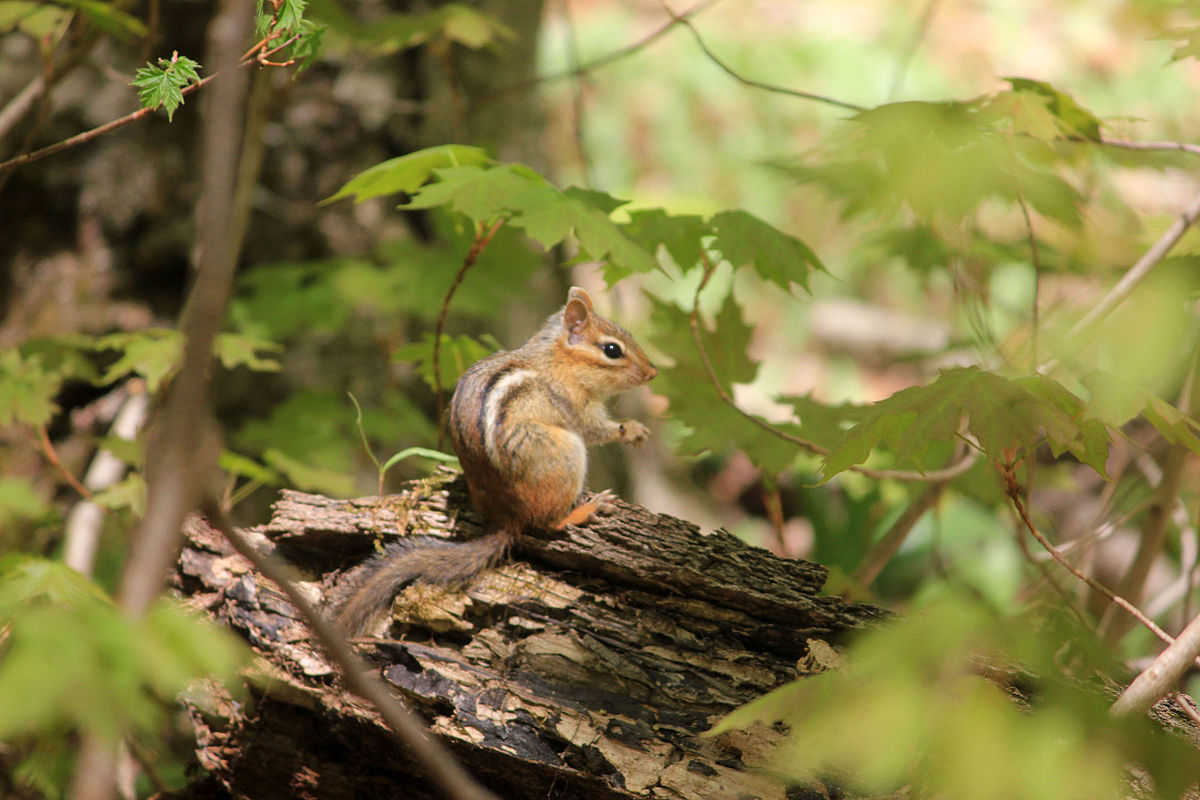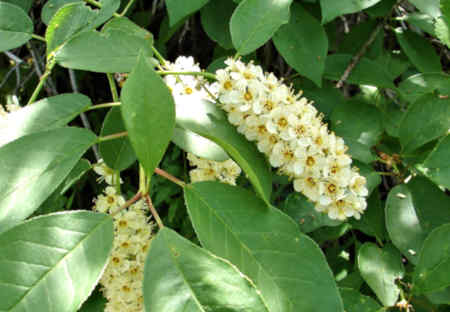ChipmunkGuide
The Secret Life of Chipmunks: Natures Tiny Acrobats
Fast Facts
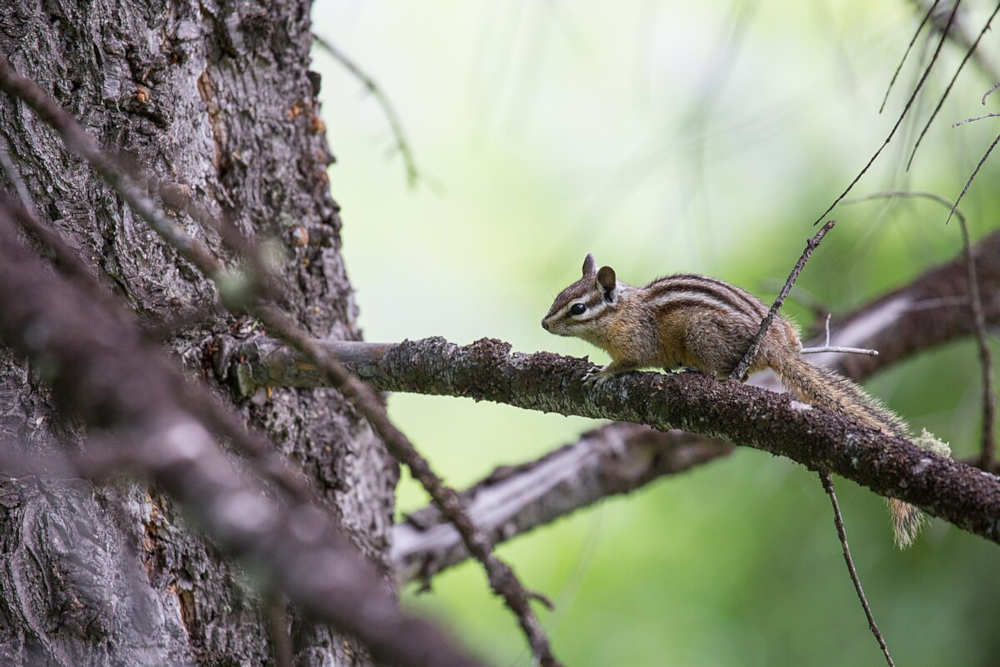
Chipmunks are natures tiny acrobats
Scientific Name: Tamias striatus (Eastern Chipmunk is the most common species)
Habitat: Found in forests, woodlands, gardens, and suburban areas across North America.
Size:Small: 9–11 inches (23-28 cm) long, including tail; weighs 2–5 ounces (56–140 grams).
Diet: Omnivorous—eats seeds, nuts, berries, fungi, and small insects.
Cheek Pouches: Can expand to three times the size of their head to store food.
Burrow: Burrows can stretch up to 30 feet long.
Reproduction: Typically 1-2 litters per year, each with 4-6 young.
Lifespan: 2-3 years in the wild, up to 8 years in captivity.
Activity: Diurnal (active during the day) but can be crepuscular or nocturnal in hot weather.
Winter Behavior: Enters a state of torpor; do not hibernate fully, waking up to eat periodically.
Conservation status:Least Concern by IAUC. They can adapt to suburban contitions.
How to Support Chipmunks: Planting native plants, providing natural cover, and offering water sources.
The Secret Life of Chipmunks: Natures Tiny Acrobats
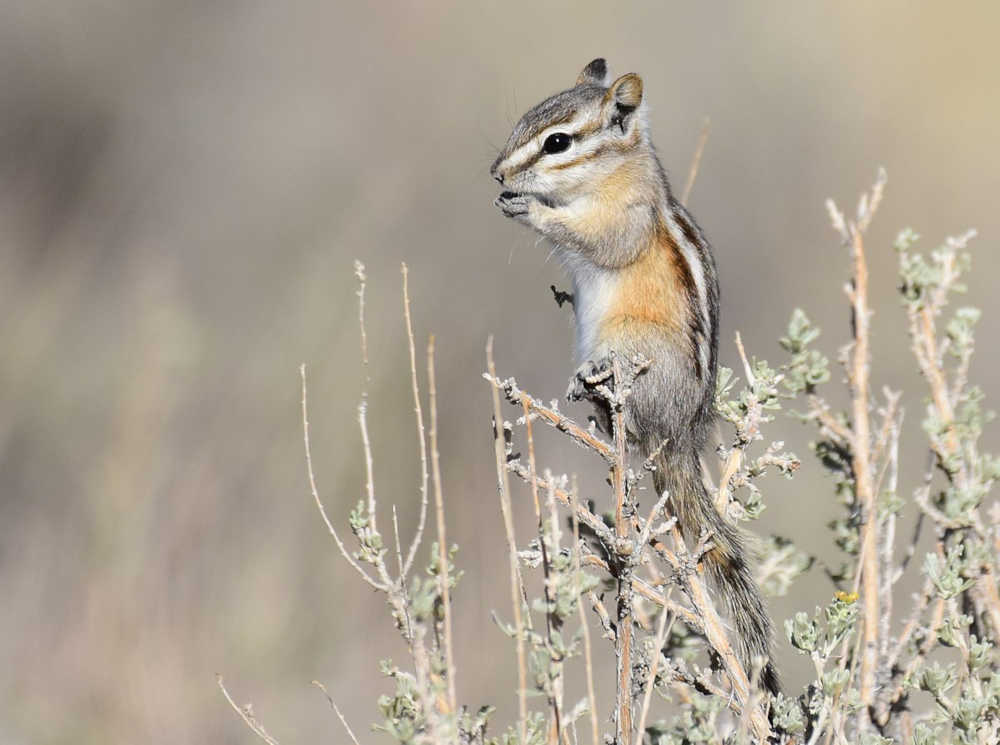
Chipmunks are very good climbers
Introduction
Chipmunks, with their iconic striped coats and energetic personalities, are among the most recognizable small mammals in North America. Often seen scurrying through gardens and forests, these rodents play a crucial role in their ecosystems. But what do we really know about chipmunks? Let’s dive into their habits, diet, native range, and more.
Scientific Classification:
Chipmunks belong to the genus Tamias and are part of the squirrel family, Sciuridae. While they share some similarities with squirrels, such as their size and agility, chipmunks are smaller, with distinct markings. The most common species in North America is the Eastern chipmunk (Tamias striatus), but there are also other species scattered across the continent.
Native Range and Habitat
Chipmunks are native to North America, particularly widespread in the United States and Canada. Their range extends from the eastern parts of the continent all the way into parts of the western U.S. and Canada. They are found in a variety of habitats, including forests, woodlands, gardens, and suburban areas. Chipmunks tend to prefer environments with plenty of cover, such as rocks, logs, and dense vegetation, where they can hide from predators.
Physical Characteristics
Chipmunks are small, typically measuring around 9 to 11 inches (23-28 cm) long, including their tail, and weighing only about 2 to 5 ounces (56-140 grams). They are most known for their distinctive fur pattern, which consists of brown or reddish fur with five dark stripes running down their back, which help them blend into their environment. They have large cheek pouches, which they use to store food and transport it back to their burrows for later consumption. These cheek pouches can expand to three times the size of their head, making them particularly fascinating to observe!
Diet and Feeding Habits
Chipmunks are omnivores, and their diet includes a mix of plant matter, seeds, nuts, berries, fungi, and small insects. They are notorious for collecting food and storing it in their burrows during the warmer months. Chipmunks are opportunistic feeders, foraging in the early morning and evening, when temperatures are cooler. They are particularly fond of acorns, seeds, and berries, but will also nibble on mushrooms, small insects, and even bird eggs when the opportunity arises.
They use their cheek pouches to carry food back to their burrows. Chipmunks will often stash food in multiple locations within their burrows to ensure they have enough resources throughout the winter months when food is scarce.
Behavior and Activity
Chipmunks are diurnal (active during the day), but their activity patterns change depending on the weather. During particularly hot days, chipmunks are less active and prefer to stay in their cool, underground burrows. These burrows, which can be up to 30 feet long, are essential for shelter and food storage. Chipmunks also use them to stay safe from predators like hawks and snakes.
Despite their energetic nature, chipmunks are known to be crepuscular (active at dawn and dusk) or even nocturnal during very hot weather, as they avoid the midday sun. Their burrows provide a refuge from the heat, offering a cooler environment where they can conserve moisture and energy.
Reproduction
Chipmunks have a high reproductive rate, typically giving birth to one or two litters per year. Each litter consists of about 4-6 young, born after a gestation period of around 31 days. Chipmunks are born blind and helpless but quickly grow to be independent, learning to forage and navigate their surroundings by the time they are a few weeks old.
While their lifespan in the wild is relatively short—usually only 2-3 years—chipmunks can live up to 8 years in captivity where they face fewer threats from predators and environmental hazards.
Predators and Defense
Chipmunks are tiny and face many predators, including birds of prey (such as hawks), snakes, and other mammals like foxes, raccoons, and outdoor cats. They rely on their quick reflexes and ability to retreat into their burrows for safety. Chipmunks also communicate with high-pitched calls, warning others of approaching predators. When they sense danger, they freeze and remain motionless to avoid detection. Additionally, chipmunks are territorial and will defend their burrows and surrounding areas from other chipmunks. They use scent markings and loud calls to assert dominance and keep others at bay.
Chipmunk Burrows: Underground Fortresses
Chipmunks are expert burrowers, and their intricate underground homes are essential for their survival. A typical burrow system can extend up to 30 feet in length and include several tunnels and chambers, each serving a different purpose. The burrow typically has a sleeping chamber, where the chipmunk rests, a food storage area for stashing seeds and nuts, and even a latrine for waste. These underground networks provide shelter from the elements, protection from predators, and a safe space to store food for the colder months.
In addition to the functional aspects of their burrows, chipmunks are quite adept at creating entrances that blend into their environment, often hidden beneath rocks, tree roots, or dense vegetation. The burrows are not only crucial for winter survival but also offer a refuge during the heat of summer, as the cooler underground environment helps them conserve energy and moisture. These burrow systems are an essential part of the chipmunk’s ability to thrive in a variety of habitats, from woodlands to suburban backyards.
Hibernation, Winter Behavior, and Hot Weather Adaptations
Though chipmunks don’t hibernate in the strictest sense, they do enter a state of torpor during the winter. This means their body temperature drops, and they become lethargic, waking up occasionally to eat the food they've stored in their burrows. Unlike true hibernators, chipmunks will wake periodically throughout the winter and may venture out for short periods to nibble on their food reserves. Their burrows serve as a refuge from the cold, allowing them to survive the winter months in relative comfort. In the early spring, chipmunks emerge from their burrows to begin foraging again.
Similarly, during extremely hot weather, chipmunks stay in their burrows for longer periods to conserve energy and avoid overheating. The temperature inside their burrows is significantly cooler, offering them relief from the heat and helping them maintain the energy they need to survive. This behavior allows chipmunks to conserve moisture and avoid the stresses of the scorching sun, emerging only during cooler times of day, such as dawn or dusk, to forage for food.
The Misconceptions About Chipmunks and how Support Chipmunksthe Case Against Harmful Control
Chipmunks play a vital role in their ecosystems, contributing to biodiversity and maintaining balance within the food chain. They serve as prey for predators like hawks, foxes, and snakes, and their seed dispersal helps promote plant life by inadvertently spreading seeds and encouraging new growth. However, despite their ecological importance, chipmunks are often seen as pests by homeowners due to the burrows they dig around gardens and lawns. While these burrows can create minor disturbances, they rarely cause significant damage to structures, as they are typically shallow and pose minimal risk to foundations or pipes.
Given their native status and the benefits chipmunks provide, homeowners should reconsider using traps or extermination methods. Instead, fostering a more balanced environment with a diverse range of native plants can shift the focus away from viewing chipmunks as a "problem" and encourage appreciation for them as a natural and valuable part of the local ecosystem.
Instead of trapping or killing these small creatures, it’s more ecologically sound to coexist. Chipmunks, like many native animals, play an integral role in maintaining the delicate balance of local ecosystems. Rather than spending hours eliminating them only to have others take over their original territory, it’s better to simply let them be. Watching chipmunks as they scurry beneath the bird feeder, move around the wildlife pond, and explore native plantings is a joy. They are full of personality, and their playful antics can bring extra life to any woodland, garden, or backyard.
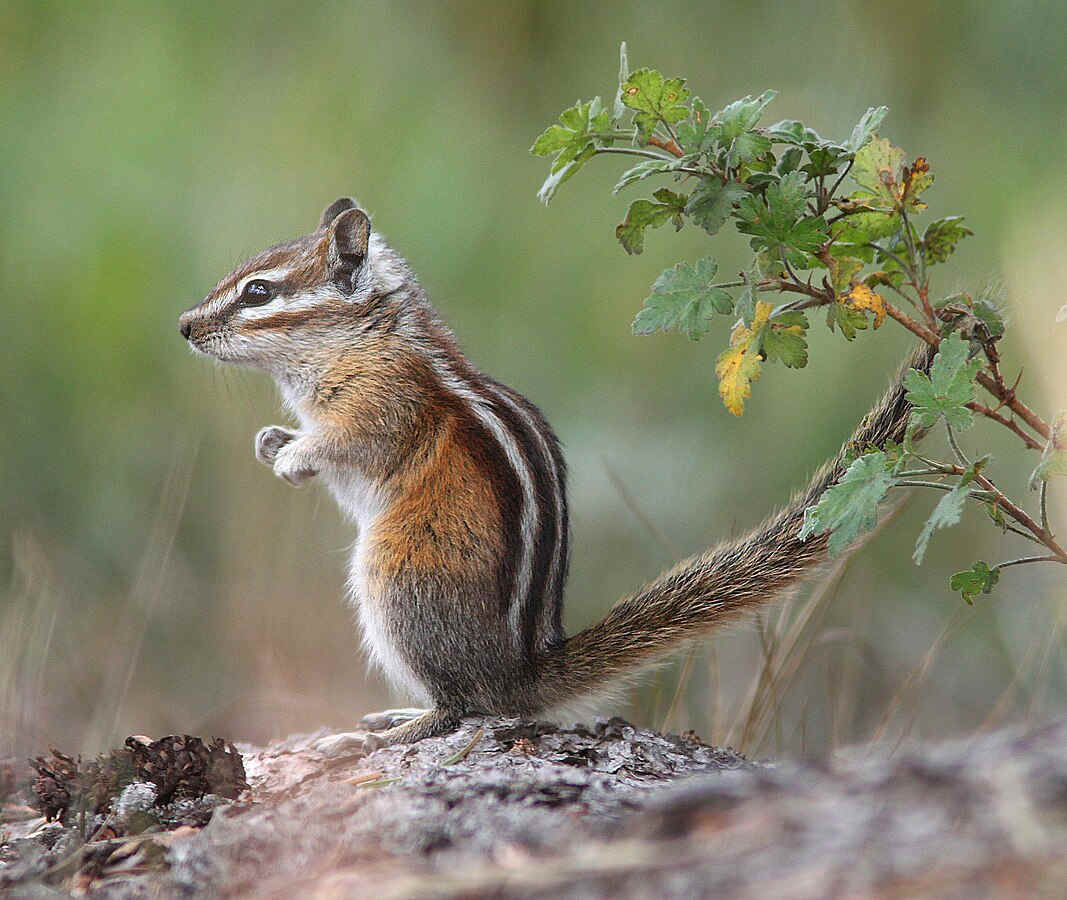
Chipmunks are native mammals that are fun to watch.
